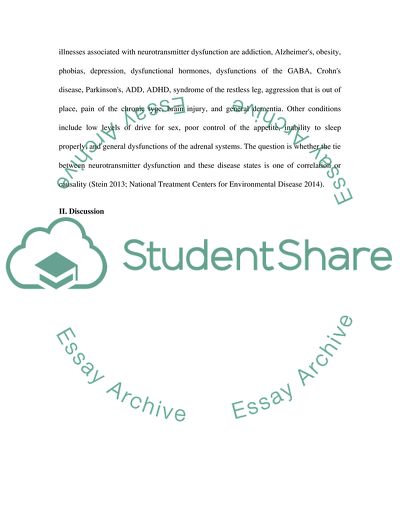Cite this document
(Brain Dysfunction Coursework Example | Topics and Well Written Essays - 1750 words, n.d.)
Brain Dysfunction Coursework Example | Topics and Well Written Essays - 1750 words. https://studentshare.org/health-sciences-medicine/1823608-s-brain-or-neurotransmitter-dysfunction-a-cause-or-correlate-of-disorders-such-as-depression-and-anxiety
Brain Dysfunction Coursework Example | Topics and Well Written Essays - 1750 words. https://studentshare.org/health-sciences-medicine/1823608-s-brain-or-neurotransmitter-dysfunction-a-cause-or-correlate-of-disorders-such-as-depression-and-anxiety
(Brain Dysfunction Coursework Example | Topics and Well Written Essays - 1750 Words)
Brain Dysfunction Coursework Example | Topics and Well Written Essays - 1750 Words. https://studentshare.org/health-sciences-medicine/1823608-s-brain-or-neurotransmitter-dysfunction-a-cause-or-correlate-of-disorders-such-as-depression-and-anxiety.
Brain Dysfunction Coursework Example | Topics and Well Written Essays - 1750 Words. https://studentshare.org/health-sciences-medicine/1823608-s-brain-or-neurotransmitter-dysfunction-a-cause-or-correlate-of-disorders-such-as-depression-and-anxiety.
“Brain Dysfunction Coursework Example | Topics and Well Written Essays - 1750 Words”. https://studentshare.org/health-sciences-medicine/1823608-s-brain-or-neurotransmitter-dysfunction-a-cause-or-correlate-of-disorders-such-as-depression-and-anxiety.


